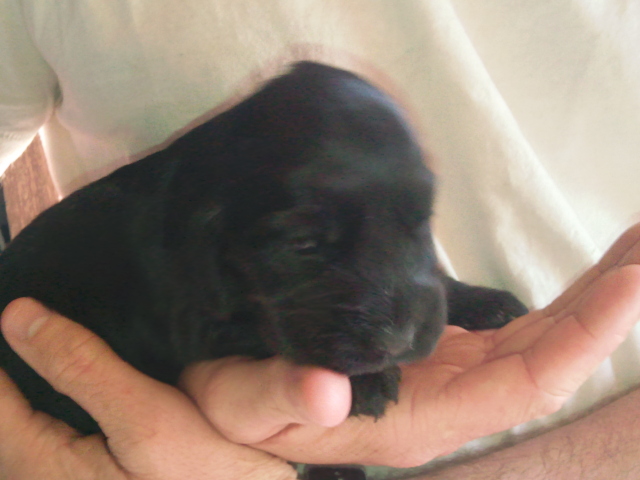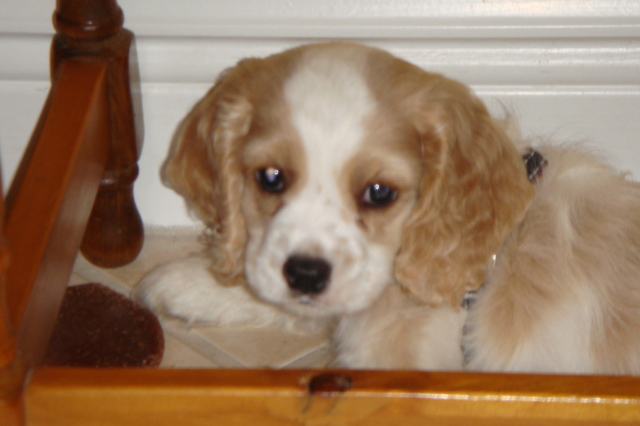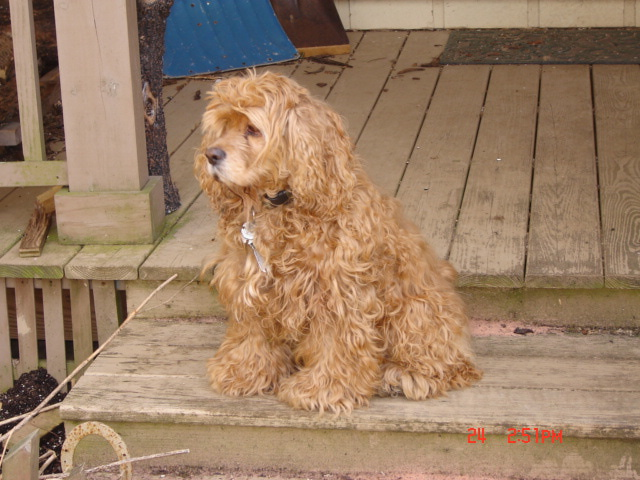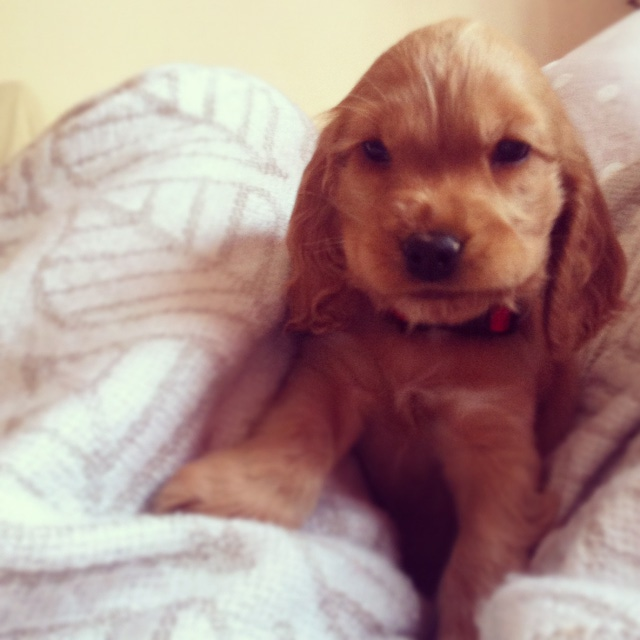QuestionWe recently brought in an 8 month old cocker spaniel. I was told he was house trained, but his old owners said he was regressing due to a schedule change. It has been a few weeks and he is doing very well, but still has accidents sometimes. I have read not to punish cockers because it could cause other problems. He does not go in the same spot all of the time in the house.
Also what I have found out about this breed is they pee when they are excited or submissive. He goes all of the time when he sees someone new or if he thinks he is in trouble. Sometimes I can just be directing him to his room while we are gone and he pees on the floor.
Please HELP!!! Since we have a golden (and they get along very well) I thought the cocker would pickup on training a little better since he has someone to observe. Thank you for your help!
AnswerYou may be fighting 2 problems. He may just need to learn how to communicate he needs to go out and even that he is allowed to go out.
At first it is your responsibility to know and take the puppy out when it
needs to go. It needs to go out the first thing in the morning, after eating,
drinking, and sleeping. If it quits playing, and starts running around
sniffing, it is looking for a place to go. Take it out quickly. You will just
have to be what I call puppy broke until it is a little older.
By the time most dogs are about 3 months old, they have figured out that if
they go to the door and stand, you will let them out. The praise slowly shifts
to going to the door. Some people hang a bell there for the dog to paw. If
your dog doesn't figure this out, try praising it and putting it out if it
even gets near the door. A stern "Bad dog!" is all the punishment that is
effective, and only when you catch it in the act and are sure you didn't miss
it going to the door. Clean up accidents promptly. I mostly keep the little
puppies out of the carpeted rooms. Still I need the can of carpet foam
sometimes. First blot up all the urine you can with a dry towel. Keep moving
it and stepping on it until a fresh area stays dry. A couple big putty knives
work well on bowel movements. Just slide one under it while holding it with
the other. This gets it up with a minimum of pushing it down into the carpet.
This works with even relatively soft ones, vomit, dirt from over turned house
plants, or anything else from solids to thick liquids. Finish up with a good
shot of carpet foam. Note, do not let the puppy lick up the carpet foam.
Once the dog is reliably housebroken, your carpet may need a good steam cleaning.
Many people strongly strongly push cleaning up all evidence of past accidents. I am slower to suggest that. Dogs will return to the same spot if they can find it. When you see one sniffing the spot, that is your clue to run it out.
The other problem is peeing as a sign of submission. And yes punishing a dog can exacerbate it. You need to build his confidence instead.
Many dogs eventually outgrow it, but you can reduce it by building the dog's confidence up. Start with obedience training. The key to most behavior problems is approaching things using the dog's natural instincts. Dogs see all the people and dogs in the household as a pack with each having their own rank in the pack and a top dog. Life is much easier if the 2 legged pack members outrank the 4 legged ones. You can learn to play the role of top dog by reading some books or going to a good obedience class. A good obedience class or book is about you being top dog, not about rewarding standard commands with a treat. Start at http://www.dogsbestfriend.com/ As you praise the dog for following your commands, it will build its confidence.
Play tug of war with the dog and lose. However at the end of the game, take the rope or toy and put it up, less the dog becomes confused about who is top dog.
Ropes from the pets' store quickly turn to hazardous shreds. Ones I made
lasted much better. Go to a hardware or home center that sells rope by the
foot. Buy 2' of 3/4" poly rope. Melt the ends, and tie knots in it. Get
them as tight as possible, put it in a vise and pound it with a hammer. Watch
carefully, and be ready to discard when it comes apart.
Finally, make sure it has a den to live in. If you are not using a crate, buy one. The dog may be happier in its den than loose in the house. It relaxes, it feels safe in its den. It rests, the body slows down reducing the need for water and relieving its self. Dogs that have been crated all along do very well. Many of them will rest in their crates even when the door is open. I think the plastic ones give the dog more of a safe, enclosed den feeling. Metal ones can be put in a corner or covered with something the dog can't pull in and chew. Select a crate just big enough for the full grown dog to stretch out in.
A dog that has not been crated since it was little, may take some work.
Start out just putting its toys and treats in the crate. Praise it for going
in. Feed it in the crate. This is also an easy way to maintain order at
feeding time for more than one dog.

 crying and food.
Questionbaby teagan
QUESTION: what is best to fe
crying and food.
Questionbaby teagan
QUESTION: what is best to fe
 Differences between breeds
QuestionQUESTION: My puppy is 12 wks.old and weights ar
Differences between breeds
QuestionQUESTION: My puppy is 12 wks.old and weights ar
 Impacted anal glands in an 11 yr old spayed female
QuestionDaisy
QUESTION: Our cocker spaniel Daisy
Impacted anal glands in an 11 yr old spayed female
QuestionDaisy
QUESTION: Our cocker spaniel Daisy
 Rescue American Cocker unpredictable biting
Question
my 4 legged boy child
My husband and I
Rescue American Cocker unpredictable biting
Question
my 4 legged boy child
My husband and I
 13 week cocker spaniel puppy turning vicious
Question
My Puppy
Hi
I have a male Golden Cocke
13 week cocker spaniel puppy turning vicious
Question
My Puppy
Hi
I have a male Golden Cocke